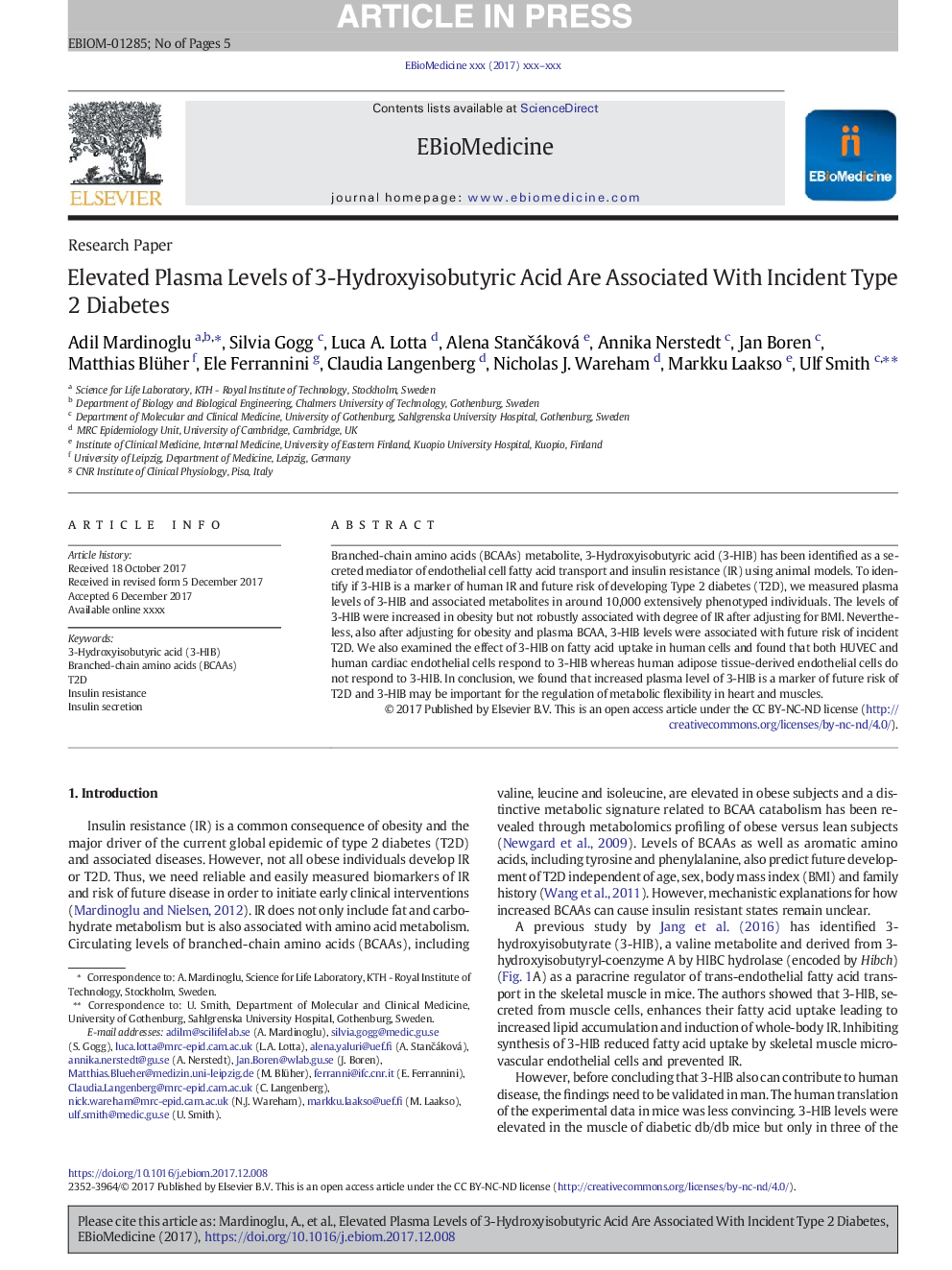| Article ID | Journal | Published Year | Pages | File Type |
|---|---|---|---|---|
| 8437592 | EBioMedicine | 2018 | 5 Pages |
Abstract
Branched-chain amino acids (BCAAs) metabolite, 3-Hydroxyisobutyric acid (3-HIB) has been identified as a secreted mediator of endothelial cell fatty acid transport and insulin resistance (IR) using animal models. To identify if 3-HIB is a marker of human IR and future risk of developing Type 2 diabetes (T2D), we measured plasma levels of 3-HIB and associated metabolites in around 10,000 extensively phenotyped individuals. The levels of 3-HIB were increased in obesity but not robustly associated with degree of IR after adjusting for BMI. Nevertheless, also after adjusting for obesity and plasma BCAA, 3-HIB levels were associated with future risk of incident T2D. We also examined the effect of 3-HIB on fatty acid uptake in human cells and found that both HUVEC and human cardiac endothelial cells respond to 3-HIB whereas human adipose tissue-derived endothelial cells do not respond to 3-HIB. In conclusion, we found that increased plasma level of 3-HIB is a marker of future risk of T2D and 3-HIB may be important for the regulation of metabolic flexibility in heart and muscles.
Related Topics
Life Sciences
Biochemistry, Genetics and Molecular Biology
Cancer Research
Authors
Adil Mardinoglu, Silvia Gogg, Luca A. Lotta, Alena StanÄáková, Annika Nerstedt, Jan Boren, Matthias Blüher, Ele Ferrannini, Claudia Langenberg, Nicholas J. Wareham, Markku Laakso, Ulf Smith,
